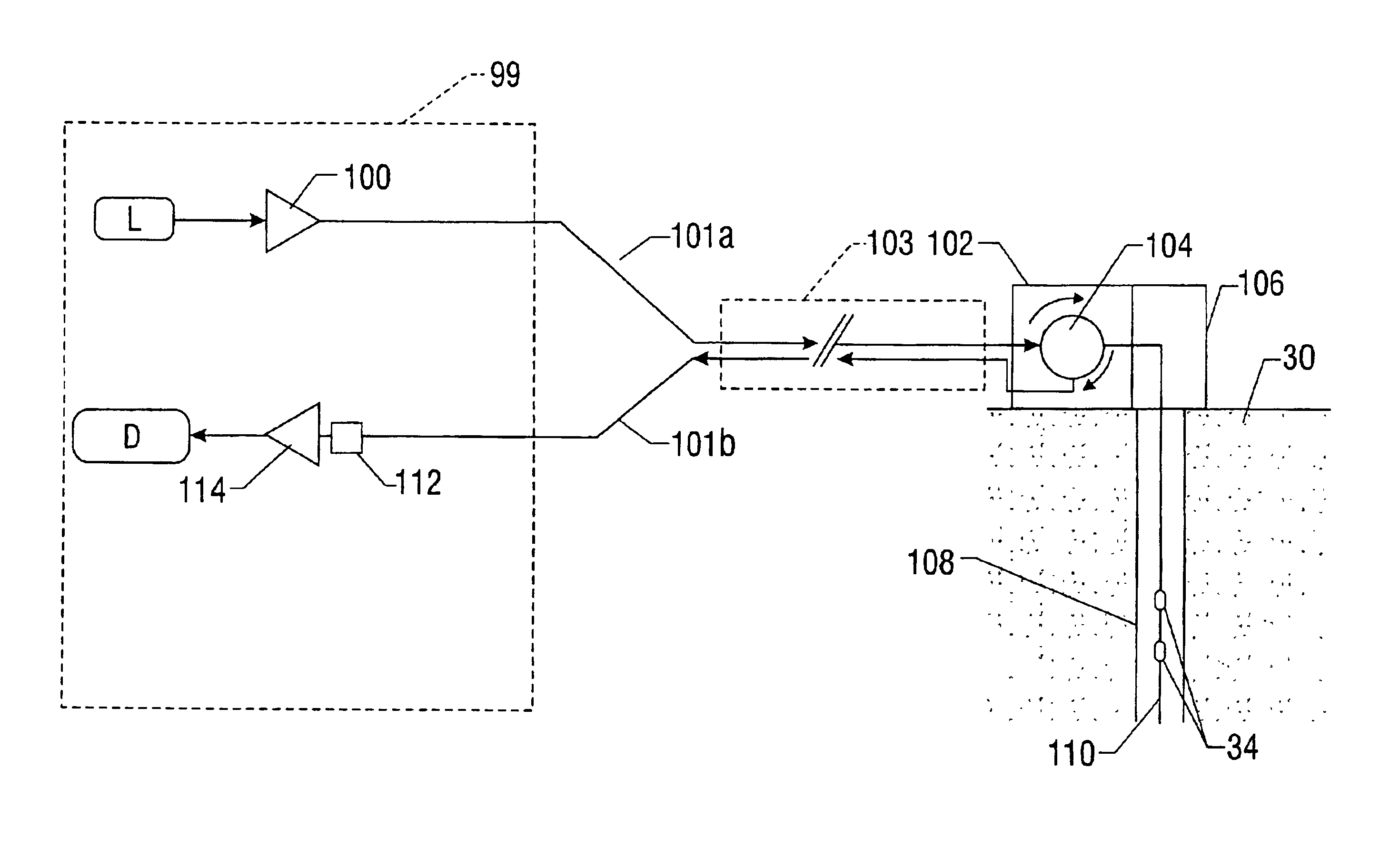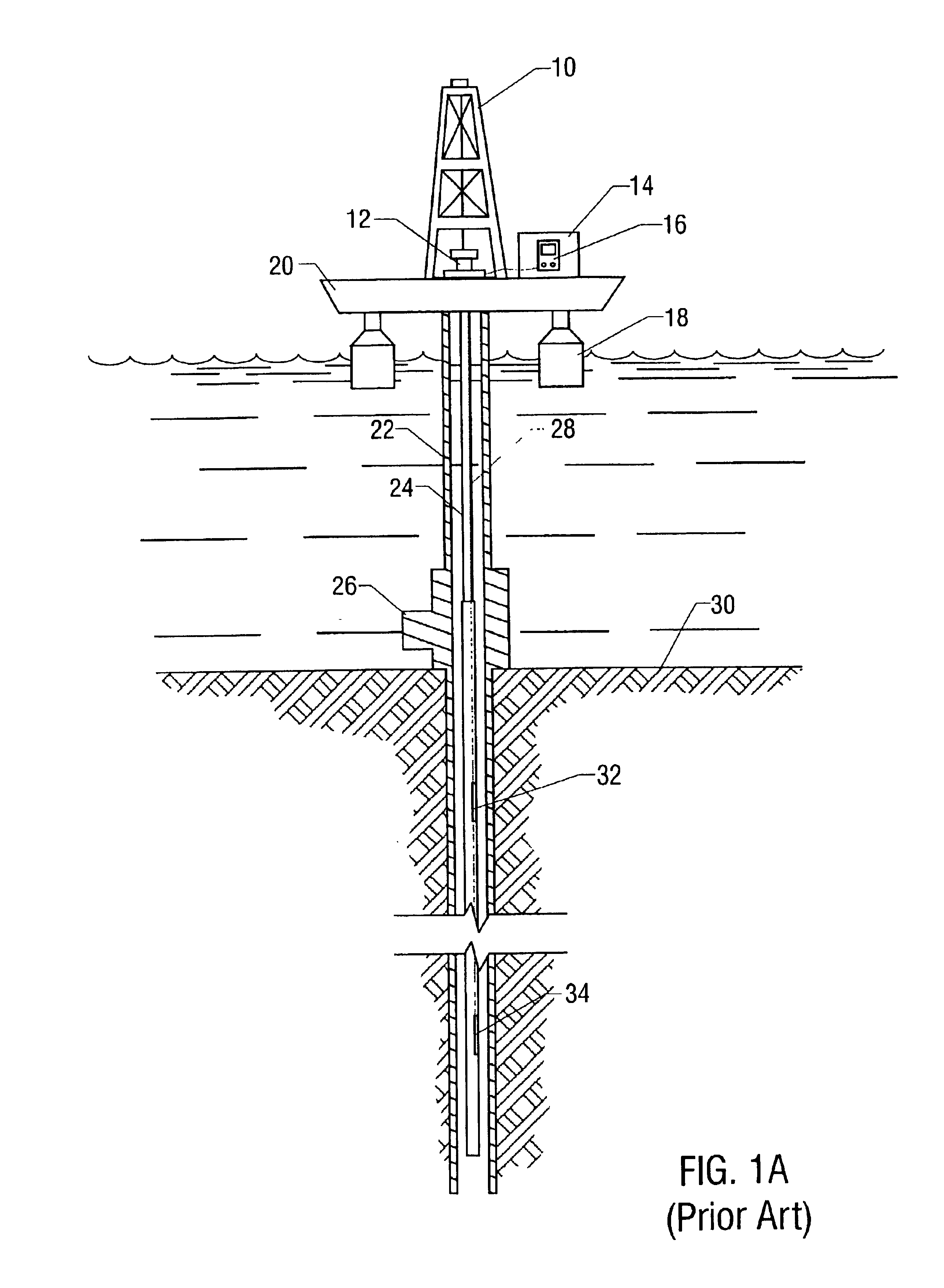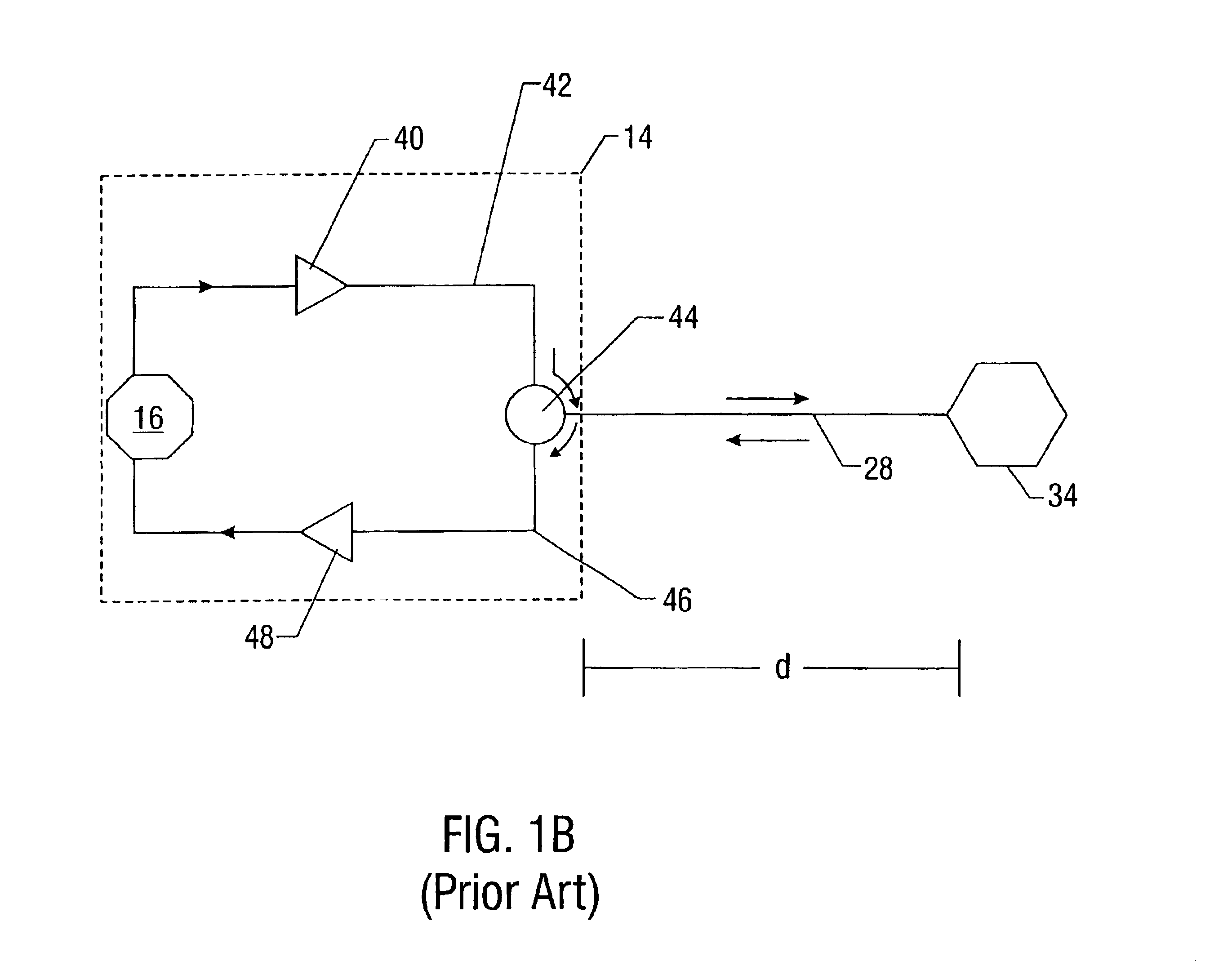Remotely deployed optical fiber circulator
a circulator and optical fiber technology, applied in the field of optical fiber signal transmission, can solve the problems of limiting the distance over which optical sensing systems can be employed, limiting the achievable deployment distance, and reducing the range of optical sensing systems. the effect of expanding the distances that optical sensing systems can span
- Summary
- Abstract
- Description
- Claims
- Application Information
AI Technical Summary
Benefits of technology
Problems solved by technology
Method used
Image
Examples
Embodiment Construction
[0021]The present invention relates to a system for monitoring and controlling production wells from a remote location using fiber optic technology. In particular, in an embodiment of the present invention, an optical circulator is remotely located within a wellhead at the top of the oil or gas well, and a separate return fiber is provided from the circulator back to the control system. In this manner, backwards-propagating optical scattering noise is minimized or eliminated, resulting in an improved optical signal-to-noise ratio and improved deployment distance of the fiber optic monitoring system.
[0022]A typical arrangement for an offshore fiber optic monitoring system according to the prior art is shown in FIG. 1A. Such an arrangement typically includes a floating workstation 18 or similar deep-water production system (e.g. fixed-leg platform, compliant tower, tension-leg platform (TLP), semi-submersible platform, or spar platform system) stationed over a submerged worksite on th...
PUM
| Property | Measurement | Unit |
|---|---|---|
| length | aaaaa | aaaaa |
| distance | aaaaa | aaaaa |
| wavelengths | aaaaa | aaaaa |
Abstract
Description
Claims
Application Information
 Login to View More
Login to View More - R&D
- Intellectual Property
- Life Sciences
- Materials
- Tech Scout
- Unparalleled Data Quality
- Higher Quality Content
- 60% Fewer Hallucinations
Browse by: Latest US Patents, China's latest patents, Technical Efficacy Thesaurus, Application Domain, Technology Topic, Popular Technical Reports.
© 2025 PatSnap. All rights reserved.Legal|Privacy policy|Modern Slavery Act Transparency Statement|Sitemap|About US| Contact US: help@patsnap.com



